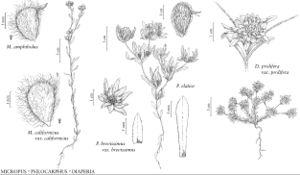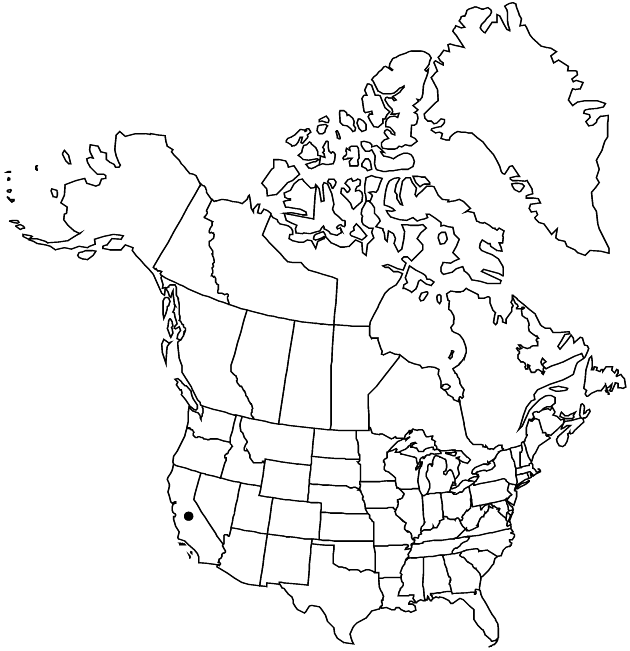Micropus amphibolus
Proc. Amer. Acad. Arts 17: 214. 1882.
Plants 2–20 cm. Heads ± spheric, 3.5–5 mm diam. Receptacles obovoid, mostly 0.7–1 mm, heights 1.2–1.8 times diams. Pistillate paleae 8–12 in 2 series, longest 2–3 mm; wings prominent, not withering, subapical, inflexed, ± obovate, plane to concave; bodies somewhat galeate, mainly chartaceous, cartilaginous medially, ± lanuginose. Staminate paleae mostly 1–3. Staminate corollas 1.2–1.9 mm, lobes 4 (–5). Cypselae 1–1.5 mm, corolla scars in distal 1/4; pappi: staminate of 1–5, ± barbellulate bristles 1.7–2 mm.
Phenology: Flowering and fruiting late Mar–Jun.
Habitat: Slopes, ridges, on and near rock outcrops, shallow gravelly soils derived from shale, mudstone, sandstone, volcanic rocks (not recorded on serpentine), edges of or in clearings, grasslands, chaparral, woodlands
Elevation: 40–900 m
Discussion
Micropus amphibolus is relatively uncommon; it is known from mountains and hills of the San Francisco Bay area and northern Coast Ranges, plus populations in outer southern Coast Ranges and in foothills of the northern Sierra Nevada. It is superficially similar to and often confused with M. californicus (see discussion there). Relatively few recent collections of M. amphibolus are known, raising significant conservation concerns.
Though consistently distinct, Micropus amphibolus combines some character states of Stylocline and Micropus (J. T. Howell 1948), suggesting that it may have descended from a hybrid between, or common ancestor of, the two genera. The best available morphologic evidence consistently places it basal within Micropus, with which it shares a majority of character states (J. D. Morefield 1992).
Selected References
None.
Lower Taxa
"lanuginose" is not a number.

